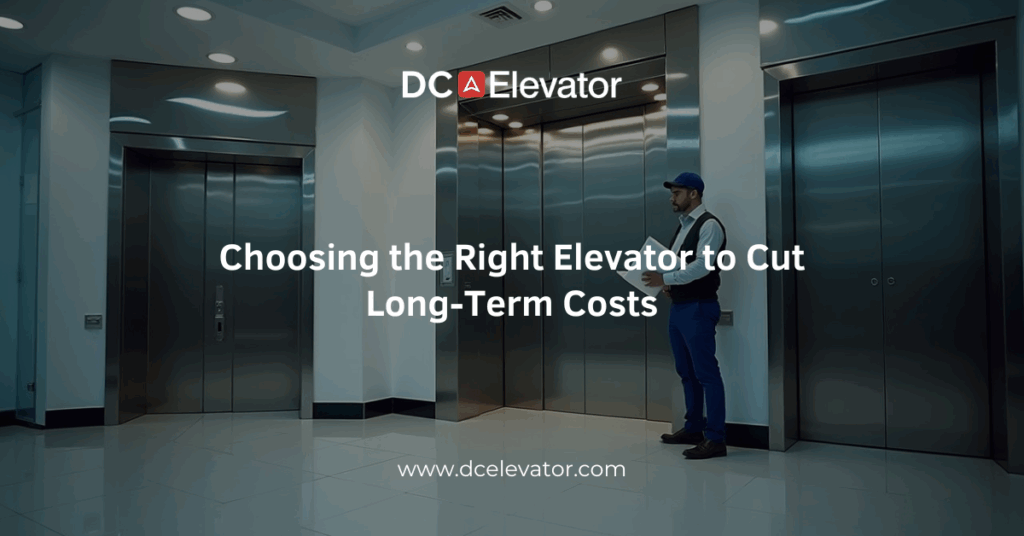When planning for a new building or upgrading an existing one, elevators often represent a significant but necessary investment. But the true cost of an elevator isn’t just in the initial purchase and installation—it’s in the decades of maintenance, energy use, and downtime that follow. Facility managers and property owners who don’t factor in these long-term costs could end up facing frequent breakdowns, high energy bills, or expensive retrofits. So how do you make the right choice from the start?
This blog explores how choosing the right elevator system can reduce your building’s lifetime costs, enhance reliability, and increase occupant satisfaction—especially in commercial, healthcare, and multi-use properties.
Why the Right Elevator Matters for Your Bottom Line
Elevators are more than just vertical transport—they’re long-term assets that can impact your building’s operational efficiency. Choosing wisely upfront can lead to decades of smoother operation and financial savings.
Common Cost Drivers Over Time:
-
Frequent repairs from outdated or mismatched equipment
-
Rising energy costs due to inefficient systems
-
Code compliance updates or unexpected retrofit requirements
-
Downtime impacting tenant satisfaction or building accessibility
Choosing an elevator system that aligns with your building’s usage, height, and traffic flow helps minimize these risks.
Key Factors That Impact Long-Term Elevator Costs
1. Equipment Type and Quality
Hydraulic and traction elevators each have distinct maintenance needs. Hydraulic systems tend to have lower initial costs but higher maintenance and energy use over time. Traction elevators, while more expensive upfront, often provide better energy efficiency and longer lifespan, especially in mid-to-high-rise buildings.
Pro Tip: Match your elevator type to your building use. For low-rise commercial properties, hydraulic may suffice. For taller or high-traffic buildings, traction systems are often the smarter choice long-term.
2. Energy Efficiency Considerations
Older elevator systems can consume significantly more electricity than modern, energy-efficient models. Choosing systems with regenerative features or efficient lighting and controls (without relying on IoT tech) can noticeably lower operational expenses.
Tips to Reduce Energy Costs:
-
Choose systems with LED cab lighting and automatic shut-off features
-
Ensure proper ventilation and HVAC integration for efficiency
-
Consider ride optimization to reduce unnecessary trips
3. Maintenance Planning and Support
Not all elevators are equally serviceable. Some proprietary systems make maintenance expensive or limit provider options, leading to delays and higher costs.
Smart Planning Tips:
-
Select non-proprietary elevator systems to allow service flexibility
-
Partner with providers who offer preventive maintenance plans
-
Factor in long-term part availability before committing
4. Code Compliance and Future-Proofing
Building codes evolve. Elevators that aren’t installed with future updates in mind could face costly retrofits or fines. Choosing an experienced installer who understands local and federal requirements helps you stay compliant long term.
Common Oversights to Avoid:
-
Inadequate ADA compliance
-
Improper machine room sizing or access
-
Overlooking fire and seismic regulations
Conclusion
Elevator decisions made today have financial consequences for years to come. By selecting the right system from the start—one that fits your building type, traffic needs, and maintenance goals—you can minimize unexpected expenses and maximize reliability.
If you’re planning a new elevator installation or considering an upgrade, our experts can help you make a cost-effective decision that supports your building’s future. Contact us today to explore solutions that align with your long-term goals.
